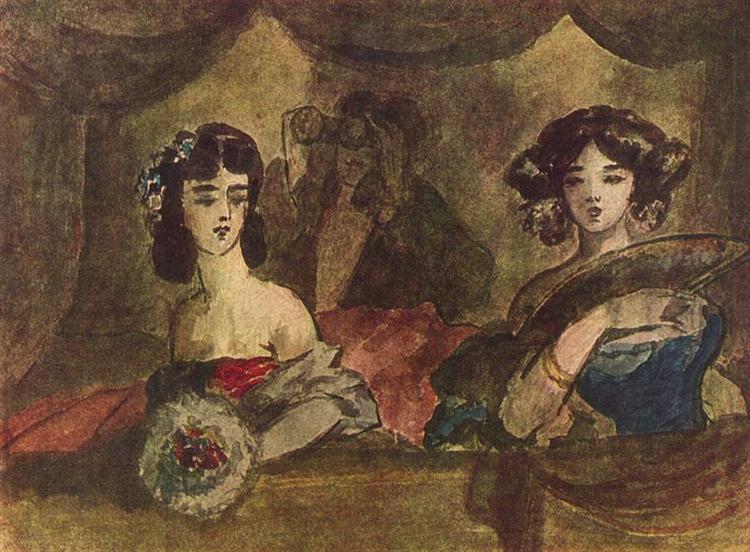I’m writing this blog post to introduce you to the section of my website on modernism.
You can use the drop-down menu under Modernism on the main menu to access the articles I’ve written so far, with more to come.
This section is based on a special-topics course I created and taught while a full-time instructor at the University of South Carolina’s School of Journalism and Mass Communications.
“Modernism” and “modernist” refer to an explosion of intellect and creativity during the late nineteenth and early twentieth centuries unequaled since the Renaissance. Many works of literature, music, and visual art created during this period were unlike any that had come before in terms of form, content, and expression.

Pablo Picasso, Les Demoiselles d’Avignon, 1907. MoMA.org
Modernist works and the artists who created them were radical, yet their influence endures even today, as we shall see.
Before we begin
To save space, I use the word “art” to encompass works of literature, music, and visual art (painting, drawing, photography). When I refer to visual art, I will use that term or cite a specific medium.
Along the way, I will post links to websites such as WikiArt and Poetry Foundation, so you can see and read some of the works discussed. I have created Spotify playlists with links, so you can listen to some of the music I write about. I will also provide a reading list of the books I found useful when designing my course.
I have no financial or other ties to the websites, books, and other materials mentioned in this blog. I receive no payment of any sort for creating and publishing this blog. I do it purely for my enjoyment and yours.
What is modernism?
Although there is no single definition of “modernism” or “modernist,” many of the works with these labels can be characterized as urban in origin or theme, subjective (reflecting the artist’s mind rather than the outside world), and difficult for audiences to understand and appreciate—at least at first.
Modernists also questioned the long-held belief that there exists a single, knowable, objective reality; instead they explored the use of multiple vantage points to more accurately represent the way humans actually interact with the world. This philosophy was expressed, for example, through the use of shifting narrators and time frames in literature, Cubism in visual art, and atonality in music.
Who were the modernists?
Just to name a few leading modernists: in visual art, Pablo Picasso, Georgia O’Keefe, Henri Matisse, Alfred Steiglitz; in music, Igor Stravinsky, Claude Debussy, Arnold Schoenberg; in literature, Virginia Woolf, T.S. Eliot, Gertrude Stein, James Joyce.
This creative explosion was not confined to the arts. Consider the scientists from this time who toppled existing ideas about the natural world and even the human mind: Marie Curie, Albert Einstein, Max Planck, Sigmund Freud. And the activists who sought radically to transform human society: Leon Trotsky, Theodor Herzl, Ida B. Wells, W.E.B. Du Bois.

Pablo Picasso, britannica.com

Virginia Woolf, britannica.com

Albert Einstein, britannica.com
Pablo Picasso, Virginia Woolf, Albert Einstein. Photos britannica.com
Can’t tell the players without a manifesto
The modernist period was an age of “isms.” Each faction of modernists proclaimed its own manifesto and gave its guiding principles a name: Futurism, Dadaism, Surrealism, Vortacism, Constructivism, Suprematism, Serialism.
Modernist designers from the Bauhaus, a building in Germany during the short-lived Weimar Republic, proclaimed “form follows function,” and applied their mantra to everything from industrial design to architecture. The Bauhaus also provided a collaborative atmosphere that nurtured some of the most influential modernist architects, designers, and visual artists.
Where did modernism happen?
Modernism is often portrayed as a European phenomenon, but England, Russia, Asia, and the Americas made important contributions as well.
Historical photographs of Paris and Vienna, monovisions.com
Two cities, Paris and Vienna, were capitals of European modernism. They both had thriving cultural scenes, where exhibitions and concerts provided venues for sharing new ideas about visual art and music (and even, at times, for some audience members to come to blows over those ideas). Both cities had rich café cultures, where the latest visual art, music, and literature could be discussed, argued over, and assimilated.
A world rapidly transformed
Change does not happen without its reasons, and works of creativity and intellect do not arise in a vacuum. Modernists lived in a world that was rapidly being transformed by political, social, scientific, and technological forces. The rate of change was accelerating, and disruptions to established ways of life were becoming more and more profound.
No wonder much of the literature, music, and visual art created during this time resembled hardly anything that had come before.
Coming soon….
In order to declare something radical and new, we must examine what came before. So I will start by looking at the state of art, science, and society in the mid-nineteenth century, primarily in Europe.
Were there clues to the upheavals to come? Were there fault lines running under the seemingly stable bedrock of Victorian-era society? Who were the first great disrupters of the status quo? Who were the precursors to the modernists mentioned above?
Only by asking and answering these questions can we understand the explosion of intellect and creativity we call modernism.







